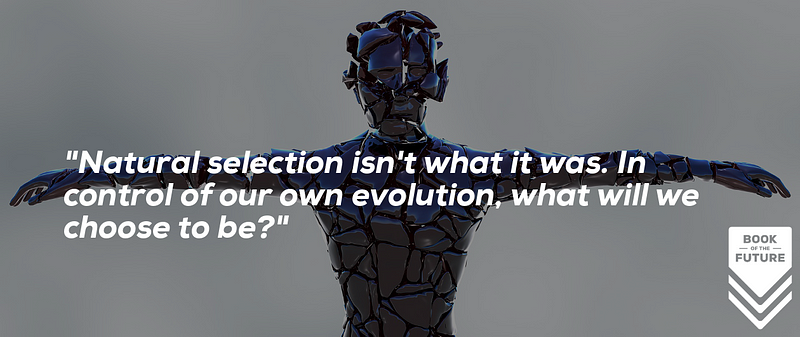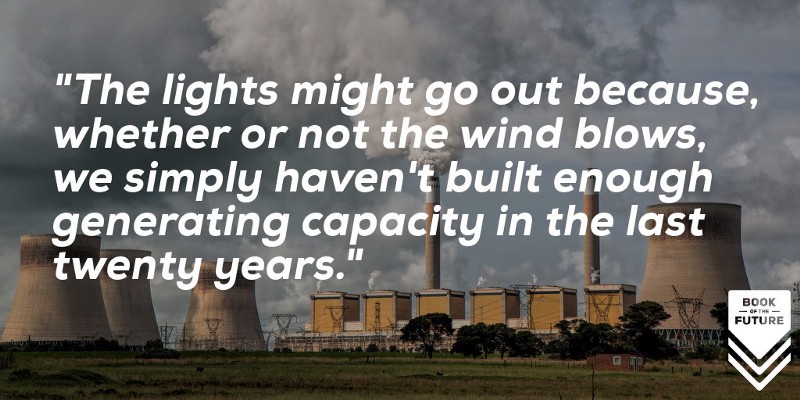TEDxManchester: You Are All Bionic Now

I gave the opening talk at TEDxManchester yesterday. It was a cracking event with a great range of speakers, covering everything from parenting in war zones, to freestyle dance, to online dating and musical coding.
Normally when I do a talk like TEDx I post my full script afterwards. But the reality is that my script for this talk ended up quite some way from the words I actually said. In this case the script was really just the bones of a talk against which I planned the slide deck. What I actually said when I got on stage added a lot more detail that only really fell into place during the couple of days before.
So rather than posting my script to accompany the slide deck, I thought I’d post a summary and a few interesting quotes from my research material. You can see the full slide deck here: TEDxManchester — You Are All Bionic Now
Navigate with arrow keys (or just scroll on devices that don’t support the javascript behind it). And read on for the thoughts behind it.
We Are All Bionic Now
The central argument of my talk was that we are all bionic now. All cyborgs enhanced by the power of pocket and remote computers to which we have happily outsourced the augmentation of our mental functions. Satnav for our sense of direction. Shared photo and video stores for memories. Calendars and digital assistants. Search engines increasing our knowledge and aiding our recall.
Because our mental image of a cyborg has been defined as the direct interface of man and machine at a physical level — the Terminator, the CyberMen, the Borg — we have missed the fact that technology has overcome the issues that obliged this physical melding when the term ‘cyborg’ was first created back in the Cold War. We now have very high performance interfaces to and between our machines. Not only can they accept rich data from a range of inputs, but they can use their processing power to make assumptions to fill in the blanks. And when they need more power they can access it on demand over fast Internet connections.
Today you no longer need to have a chip in your head or your brain directly connected to mechanical body parts in order to be a cyborg.
And that’s good because the challenges we are facing now are very different to the ones that scientists faced back in the Cold War. In a stable, developed economy like the UK our challenges are much more mental than physical. The places we need augmentation are not primarily in lifting heavy objects or surviving harsh extra-terrestrial environments. Or for that matter, war zones (though this issue drives the continued research of more physical cyborg applications).
We use our cyborg powers today to filter the morass of content that comes our way. To navigate a world that is changing ever faster. And to inform and enrich ourselves with knowledge and media, for pleasure or to help us tackle the challenges of our work.
The next step is for portions of our personality to break off from the physical whole and become semi-autonomous in the cloud and in other devices. In a total reverse of the original idea of a human brain in a robot body, fragments of human thoughts, experiences, preferences and needs will be encapsulated in code and allowed to roam across the Internet doing our bidding.
A limited micro-clone of you will be in your self-driving car, remembering your address, preferences and even preferred driving style.
Another micro-clone will handle mundane shopping tasks, ensuring that not only do you never run out of toilet paper, but that when your preferred brand isn’t available you get the next best thing based on an understanding of you.
Perhaps there should have been a moral debate about whether we want to be cyborgs. But the reality is that we are now. The question we have to address is how far we want it to go. And what we will all do with our cyborg powers.
###
Research
I found these excerpts from academic papers/books looking at the subject of cyborgs really useful — and fascinating,
“The use of the term ‘cyborg ‘ to describe a human-machine amalgam originated during the Cold War. It was coined by Manfred Clynes and Nathan Kline in Astronautics (1960) for their imagined man-machine bybrid who could survive in extraterrestrial environments. NASA, which needed an enhanced man for space exploration, sponsored their work. According to the original conception, the cybernetic organisms would remain human in a Cartesian sense; their bodies (like machines) would be altered, whilst their minds could continue their scientific research.”
TechnoFeminism, By Judy Wajcman 2004
“By including gender [in the Turing Test], Turing implied that renegotiating the boundary between human and machine would involve more than transforming the question of “who can think” into “what can think”. It would also necessarily bring into question other characteristics of the liberal subject, for it made the crucial move of distinguishing between the enacted body, present in the flesh on one side of the computer screen, and the represented body, produced through the verbal and semiotic markers constituting it in an in electronic environment. This construction necessarily makes the subject into a cyborg, for the enacted and represented bodies are brought into conjunction through the technology that connects them.”
How We Became Posthuman: Virtual Bodies in Cybernetics, Literature and Informatics, N Katherine Hayles, 1999
“I believe that these figures embody the libidinal-political dynamics of the consumerist ethos to which young peoplehave been systematically habituated during the contemporary period. …the Cyborg has incorporated the machineries of consumption into its juvenescent flesh.”
Rob Latham, Consuming Youth: Vampires, Cyborgs and the Culture of Consumption, 2002







